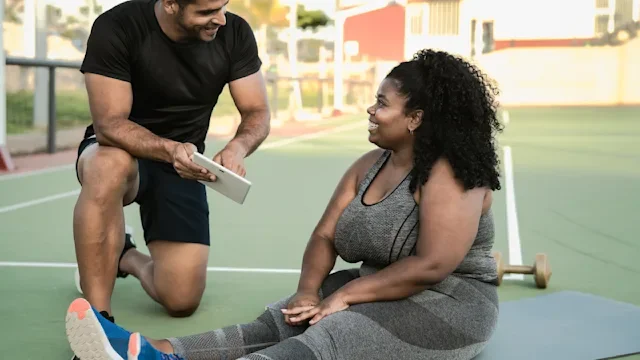Key takeaways:
Experts generally recommend taking 1 to 3 rest days per week. But the amount of rest you need depends on your fitness level and exercise intensity.
Rest days are essential for proper recovery from exercise. Adequate rest can reduce the risk of injuries, prevent overtraining, and help you get the most out of your workouts.
Taking a rest day doesn’t mean avoiding all physical activity. You can try low-impact, active recovery workouts like yoga or walking on rest days.
We often hear about the importance of exercise. And while it’s true that regular exercise is critical for your health and fitness, so is rest and recovery. Without adequate rest, working out can cause physical and mental burnout. It can also compromise your fitness gains.
But how much rest do you need? And what should you do on your rest days? It depends on several factors. But expert-backed recommendations can help you decide how many rest days to take each week.
How often should you take a rest day?
It depends. And there are many steps to creating a fitness plan. First, you identify your goals. Then, you select the types of exercise you will do. And finally, you choose a workout schedule to help you reach those goals. Deciding how many rest days a week you need is an essential part of that plan.
Search and compare options
Most people should aim for 1 to 3 rest days per week. But the number of rest days you take –– and what you do on those days –– depends on several factors, including:
Your current fitness level
The types of exercises you’re doing
Your workout intensity and duration
Here’s how each of these affects the amount of rest you need.
Fitness level
Typically, beginners need more rest days than those who have been exercising consistently for at least 6 months. New exercise causes changes in your muscle cells, like microscopic damage. That's why postworkout muscle soreness is common when you start your fitness journey or return after a long break. Rest days give your body time to adjust to the demands of physical activity.
Beginners should consider starting with an every-other-day workout schedule. So you exercise one day, rest the following day, and repeat. With this schedule, you take 3 rest days per week. As you get fitter and stronger, you can transition to working out 2 days in a row, followed by a rest day. That’s about 2 rest days per week.
Advanced or competitive athletes may only need 1 rest day per week. But other factors, including trainer or coach recommendations, also matter.
Read more like this
Explore these related articles, suggested for readers like you.
Exercise type
The type of exercise you do can also affect your rest day schedule. For example, high-impact aerobic activities like running are more strenuous on the body. Even advanced exercisers might need 2 to 3 days of rest from running per week. Lower-impact exercises like cycling or swimming might require less rest and recovery time.
Experts recommend 2 to 3 rest days between strength-training workouts like lifting weights. So you can plan resistance workouts that target different muscle groups. For example, you might do upper-body exercises on Monday and lower-body exercises on Tuesday. On Wednesday, you could do a cardio workout. By Thursday, your upper-body muscles would be rested enough to train again.
Workout intensity and duration
The harder or longer your workouts, the more rest your body needs for proper recovery. That's why the American College of Sports Medicine recommends at least 2 rest days between high-intensity exercise sessions. Examples of vigorous workouts include running, stair climbing, and lifting heavy weights.
Sometimes, you might need to take unplanned rest days. And that’s OK. Listening to your body is more important than keeping a rigid training schedule. If you have excessive muscle soreness or aches and pains that may indicate the onset of an injury, you should take a rest day.
Why are rest days important?
Rest is a necessary component of a successful training plan. Here are some of the top benefits of rest days.
1. Prevent overtraining and injury
You might think exercising more often and at a higher intensity is the key to achieving your fitness goals. But this strategy doesn’t work if you don’t make time for rest. Too much exercise without proper rest and recovery can lead to injury and overtraining syndrome. Common overtraining symptoms include:
Prolonged fatigue
Unusual muscle or joint pain
Irritability or moodiness
Changes in appetite
Exercising too often or too intensely can also hurt your workout performance and derail your training plans. That’s why rest days are important for reaching goals like building muscle and boosting endurance.
2. Support exercise recovery
It’s fairly easy to see why taking a rest day can reduce the risk of injury and overtraining. But you might not realize that rest helps your body recover and adapt to your training.
New or strenuous exercise creates tiny tears in your muscle fibers. Adequate rest allows your body to repair and rebuild those muscle fibers after your workout. The repair process causes cellular changes that help your muscles adapt and grow. It also helps restore energy before your next workout.
3. May reduce muscle soreness
Your body has time to recover and adapt to exercise on rest days. So you might start to notice fitness gains with regular rest days.
For example, a review found that active recovery (more on this below) may reduce delayed-onset muscle soreness. The recovery strategy may also prevent declining muscle strength after exercise. But the researchers noted that no recovery method significantly improved performance after intense exercise. So there’s a need for more research.
That said, taking weekly rest days can help you get the most out of your exercise sessions. It can also help you avoid hurdles –– like a workout plateau –– that delay your training goals.
4. Support mental health
Time off gives your mind a break from strenuous training, too. You can use rest days to relax, clear your head, and focus on other forms of self-care that help relieve stress. That could mean doing a hobby, getting a massage, or spending time with loved ones.
Rest days serve as a great distraction from the grind of routine training. They can help you beat boredom and stay motivated. After a break, you’ll be mentally prepared for your next sweat session. If you have more focus, energy, and strength to devote to your workouts, you can perform optimally and stay on track to reach your fitness goals.
What should you do on your rest day?
A rest day can include active or passive recovery. Passive recovery involves total rest, with little to no physical activity. This is particularly important when you’re fending off an illness or recovering from an injury or overtraining syndrome. It may also be necessary when you didn’t sleep well the night before a workout.
Active recovery involves less strenuous exercise after a vigorous workout. On an active rest day, you might do one of the following low-intensity activities:
Walking
Swimming
Yoga or tai chi
This method keeps your body moving and your blood flowing while you recover from higher-intensity workouts.
Deciding between a passive or active rest day depends on your training plan and goals. You might opt for active recovery days after your usual moderate-intensity workouts. But passive rest may be better after a particularly strenuous workout or competition like a marathon. Always listen to your body.
And no matter which option you choose, be sure to prioritize a nutritious diet and adequate sleep. Both are critical for exercise performance and recovery.
Should you take protein or creatine supplements on rest days?
Your fitness level and training plan can help you decide. Protein powder and creatine supplements have been linked to increased muscle mass, improved athletic performance, and better exercise recovery. But research on the best time to take sports supplements is mixed.
For example, having a protein shake before or after exercise may help with muscle growth and workout recovery. Some studies suggest that taking creatine after exercise is better than taking it before a workout. But there’s a need for more research.
Athletes may need more protein to support their training regimen. They may also find that creatine helps increase muscle strength and power while decreasing fatigue during vigorous workouts. Taking protein or creatine on rest days might help them meet their needs. But most people can get adequate protein and creatine from a balanced diet with protein-rich foods. Animal-based protein, such as meat and fish, contains creatine. Plant-based protein, like tofu, beans, and nuts, contain amino acids that help the body produce more creatine.
If you take supplements to meet your fitness goals, the best timing might come down to individual needs and preferences. You can try taking a supplement at different times –– before or after exercise and on rest days –– to see what works best for you.
The FDA doesn’t closely regulate dietary supplements. So be sure to look for supplements from trusted sources.
The bottom line
Rest is a critical part of any fitness plan. Deciding how many rest days a week you should take depends on your fitness level and exercise intensity. But most people should aim for 1 to 3 rest days per week. You can use your rest days to support recovery by doing light exercise and working on mobility.
Your workout schedule may not always go as planned. So listen to your body and take a rest day when you feel depleted or have unusual aches and pains. Doing so can help you avoid injuries or other training delays in the long run.

Why trust our experts?



References
American College of Sports Medicine. (n.d.). A road map to effective muscle recovery.
American Heart Association. (2024). Strength and resistance training exercise.
Antonio, J., et al. (2013). The effects of pre versus post workout supplementation of creatine monohydrate on body composition and strength. Journal of the International Society of Sports Nutrition.
Bonnar, D., et al. (2018). Sleep interventions designed to improve athletic performance and recovery: A systematic review of current approaches. Sports Medicine.
Dalleck, L. C. (n.d.). The science of post-exercise recovery. American Council on Exercise.
Dattilo, M., et al. (2020). Effects of sleep deprivation on acute skeletal muscle recovery after exercise. Medicine and Science in Sports and Exercise.
Doherty, R., et al. (2021). The sleep and recovery practices of athletes. Nutrients.
Egan, B., et al. (2013). Exercise metabolism and the molecular regulation of skeletal muscle adaptation. Cell Metabolism.
Fares, R., et al. (2022). Effect of active recovery protocols on the management of symptoms related to exercise-induced muscle damage: A systematic review. The Strength and Conditioning Journal.
Hertzler, S. R., et al. (2020). Plant proteins: Assessing their nutritional quality and effects on health and physical function. Nutrients.
Kerksick, C. M. (2019). Chapter 38 - Requirements of proteins, carbohydrates, and fats for athletes. Nutrition and Enhanced Sports Performance.
Ribeiro, F., et al. (2021). Timing of creatine supplementation around exercise: A real concern? Nutrients.
Roman, W., et al. (2021). Muscle repair after physiological damage relies on nuclear migration for cellular reconstruction. Science.
Ross, J. (2015). Passive vs. active recovery: Which is more effective? American Council on Exercise.
Schoenfeld, B. J. (2010). The mechanisms of muscle hypertrophy and their application to resistance training. The Journal of Strength and Conditioning Research.















